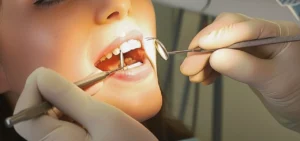Toothpaste is a fundamental component of oral hygiene, but with so many options available, choosing the right one can be overwhelming. In this detailed guide, we’ll explore everything you need to know about toothpaste, including its types, functionality, benefits, importance, proper usage, frequency, and more.
Understanding Toothpaste:

Toothpaste, also known as dentifrice, is a paste or gel used in conjunction with a toothbrush to clean and maintain oral hygiene. It typically contains abrasives, detergents, fluoride, flavorings, and other ingredients that help to remove plaque and bacteria from the teeth, freshen breath, and prevent tooth decay and gum disease.
Types of Toothpaste:
Fluoride Toothpaste:
Fluoride toothpaste is the most common type of toothpaste and is recommended by dental professionals for its ability to strengthen tooth enamel and prevent cavities. Fluoride helps to remineralize the teeth and protect against acid erosion caused by plaque and bacteria.
Whitening Toothpaste:
Whitening toothpaste contains abrasive particles or chemicals that help to remove surface stains and discoloration from the teeth, resulting in a brighter, whiter smile. While whitening toothpaste can be effective for mild staining, it may not produce dramatic results for more severe discoloration.
Sensitive Toothpaste:
Sensitive toothpaste is formulated for individuals who experience tooth sensitivity to hot, cold, or sweet stimuli. It contains ingredients such as potassium nitrate or strontium chloride, which help to desensitize the nerves in the teeth and provide relief from sensitivity.

Natural Toothpaste:
Natural toothpaste is made from natural ingredients such as baking soda, essential oils, and herbal extracts. It is free from artificial colors, flavors, and preservatives, making it a popular choice for individuals seeking a more eco-friendly and chemical-free option.
Tartar Control Toothpaste:
Tartar control toothpaste contains ingredients such as pyrophosphates or zinc citrate, which help to prevent the buildup of tartar (hardened plaque) on the teeth. Regular use of tartar control toothpaste can help to reduce the risk of gum disease and maintain a clean, healthy mouth.
The Importance of Toothpaste:
Toothpaste plays a vital role in maintaining good oral health by removing plaque and bacteria from the teeth, freshening breath, and preventing dental problems such as cavities, gum disease, and bad breath. Regular brushing with toothpaste helps to keep your mouth clean and healthy, reducing the risk of oral health issues and promoting a bright, confident smile.
How to Use Toothpaste Properly:
Proper toothpaste usage is essential for achieving effective results and maintaining optimal oral hygiene. Follow these steps to ensure you’re using toothpaste correctly:

Choose the Right Toothpaste:
Select a toothpaste that suits your specific needs and preferences, such as fluoride for cavity protection, whitening for stain removal, or sensitivity relief for sensitive teeth.
Brush Thoroughly:
Brush your teeth for two minutes, using gentle, circular motions to clean all surfaces of your teeth and along the gumline. Pay special attention to hard-to-reach areas and the backs of your teeth.
Spit, Don’t Rinse:
After brushing, spit out the excess toothpaste without rinsing your mouth with water. This allows the fluoride in the toothpaste to continue working to strengthen tooth enamel and protect against cavities.
Brush Twice a Day:
Brush your teeth at least twice a day, ideally in the morning and before bed, to remove plaque and bacteria that have accumulated throughout the day and night.

Apply the Right Amount:
Squeeze a pea-sized amount of toothpaste onto your toothbrush. Using too much toothpaste can be wasteful and may cause excessive foaming.
Additional Tips for Effective Toothpaste Usage:
Be Consistent:
Make tooth brushing a daily habit by incorporating it into your morning and bedtime routines. Consistency is key to achieving and maintaining good oral health.
Use a Soft-Bristled Toothbrush:
Pair your toothpaste with a soft-bristled toothbrush to avoid damaging your tooth enamel and gums.
Visit Your Dentist Regularly:
In addition to regular brushing, be sure to visit your dentist for checkups and cleanings every six months to maintain optimal oral health.
In conclusion, toothpaste is a crucial tool for maintaining good oral hygiene and preventing dental problems. By choosing the right type of toothpaste for your needs and using it properly, you can keep your mouth clean, healthy, and free of dental issues. For more information on toothpaste or to schedule a dental appointment, contact Dr. Veners today.






